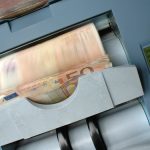Disposable plates, disposable cutlery, disposable diapers. Everybody is aware of the throwaway culture behind packaging that’s filled up landfills and caused possibly irreversible strain on the environment. Plastics take hundreds of years to break down while other synthetic materials will be around indefinitely.
This has caused the rise of environmental packaging that’s meant to reduce a product’s impact on the ecosystem at large. People are flocking to these products since it is now apparent from the pictures of massive garbage dumps that the previous methods of packaging products just isn’t sustainable. Packaging companies are finding new and inventive ways to replace the old, harsh methods of yore with new environmentally safe materials.
Let’s take a look at how things are changing for the better:

The Old Way
One particular egregious form of packaging would be single-serving foods. They are designed to be quickly purchased, consumed, and then thrown into the waste bin. Typically, these products also need to be able to survive on the shelf for some time before purchase, so they’re small products made from specialized plastics meant to keep everything out. Part of that durability means it takes a long time for it to decompose.
The chip bag is another particularly insidious form of trash. With six or more layers of foil and plastic, these bags are favored for their low weight and ability to have attractive graphics printed on the front. Food giants love this kind of packaging as shipping costs are low and many of them can be placed on a single shelf. The downside is that they are not very recyclable due to the complex mixture of materials used.
The trend here is that packaging companies favor materials that are inexpensive to produce, allow products to be easily branded, as well as easily shipped from place to place. The environment is not the concern here, but instead maximizing profit margins and warehouse space.
The New Way
If you’ll notice, the old ways of packaging are full of non-recyclable materials that are all made of composite synthetic materials. To move forward, packaging has to be reconsidered from the ground up, with its eventual discarding as part of the design. That’s why modern packaging design relies heavily on natural, recyclable materials. Not only that, the sheer amount of materials used per package is also going down. Manufacturers are looking at where to trim the fat around the edges of the products, like incorporating the product into the packaging or by changing the shape of the packaging to result in less materials used overall.
The new dogma around packaging has everything to do with the long term sustainability of the environment while still doing everything to offer a package that will protect the package as well as properly advertise its contents.
As we move forward as a society towards more sustainable lifestyles, expect to see more natural and recyclable packaging in the future. Also, expect packages that are differently shaped than what you’re used to. Instead of having a perfectly square or rectangular product, you might find a product with a sharp incline on the top if it isn’t a product that will be stacked.











